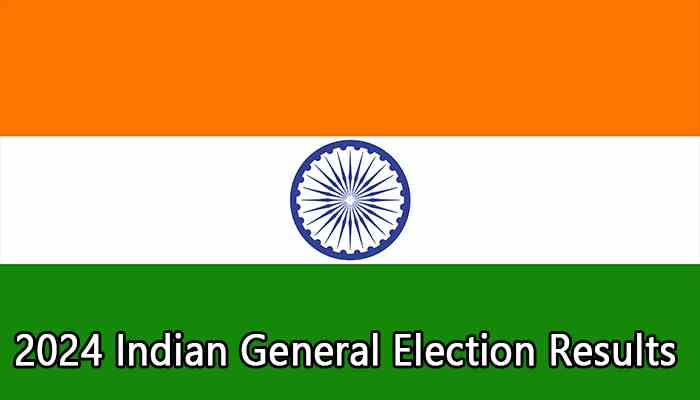2024 Indian General Election Results: Shocks and Insights
As I sat down to unpack the Indian general election results of 2024, I couldn’t help but feel the weight of history unfolding. This wasn’t just another election—it was a seismic shift in India’s political landscape, one that kept me glued to the updates rolling in on June 4 and 5, 2024. With 642 million voters, including a record-breaking 312 million women, casting their ballots, this was the largest democratic exercise the world has ever seen. And trust me, the outcomes were anything but predictable.
I’ve spent years analyzing global elections as a political enthusiast and content creator, and the Indian general election results this time around hit differently. Narendra Modi secured his third term as Prime Minister, but the numbers told a story of resilience, surprises, and a revitalized opposition. Let’s dive into what happened, why it matters, and what I think it means for India’s future—all while keeping it real, engaging, and packed with insights you won’t find just anywhere.
Teasing can be a fun way to add humor, but it’s important to know your audience. If you share a close relationship, a gentle tease can bring a chuckle. Try something like, “Another year older, but not necessarily wiser! Happy Birthday Wishes in Marathi !” Always ensure your teasing remains friendly and doesn’t cross the line. You want to make them smile, not cringe
A Nail-Biter of an Election: The Big Picture
When the Indian general election results dropped, I was floored by the sheer scale. Picture this: 968 million eligible voters, seven grueling phases from April to June, and a 44-day marathon that made it the second-longest election in India’s history. The National Democratic Alliance (NDA), led by Modi’s Bharatiya Janata Party (BJP), clinched 293 seats in the 543-seat Lok Sabha—enough to form the government. But here’s the kicker: the BJP itself only bagged 240 seats, a drop from its 2019 haul of 303. For the first time in a decade, Modi’s leading a coalition government, leaning on allies like the Telugu Desam Party and Janata Dal (United).
Meanwhile, the opposition—Indian National Developmental Inclusive Alliance (INDIA), spearheaded by the Indian National Congress (INC)—shocked me with 234 seats. The INC alone scored 99, nearly doubling its 2019 tally. I couldn’t believe how close this race got, with the NDA’s majority resting on a razor-thin edge above the 272-seat mark. The Indian general election results painted a picture of a nation at a crossroads, and I knew I had to break it down for you.
Also Check: Pushpa 2 Collection: Breaking Records & Redefining Cinema
Why These Results Kept Me Up at Night
I’ve tracked elections worldwide, but the Indian general election results of 2024 felt personal. Maybe it’s because I’ve always admired India’s chaotic, vibrant democracy—or maybe it’s the unexpected twists that unfolded. The NDA’s 293 seats gave them the win, sure, but losing 67 seats from 2019 (some sources say 57, but I’ll stick with the majority count) signaled cracks in their dominance. Modi’s third term oath on June 9, 2024, was historic, yet it’s his first time juggling coalition partners. That’s a game-changer I can’t stop thinking about.
Then there’s the INDIA alliance. With 234 seats, they didn’t just show up—they roared back. The INC’s resurgence, alongside heavy hitters like the Samajwadi Party (37 seats) and All India Trinamool Congress (29 seats), made me sit up and take notice. These Indian general election results weren’t just numbers; they were a wake-up call that India’s political tides are shifting.
State-by-State: Where the Action Happened
Let’s zoom in on the states, because that’s where the Indian general election results got juicy. I pored over the data, and here’s what stood out:
- Uttar Pradesh (80 seats): This powerhouse state flipped my expectations. INDIA snagged 43 seats, while the NDA got 36. One seat went to “others.” It’s a battleground that showed the opposition’s muscle.
- Tamil Nadu (39 seats): INDIA swept all 39 seats. Zero for the NDA. I mean, talk about a clean sweep!
- Gujarat (26 seats): Modi’s home turf stayed loyal, handing the NDA 25 seats and INDIA just 1. No surprises there.
- West Bengal (42 seats): INDIA dominated with 30 seats to the NDA’s 12. A massive win for the opposition.
Check out this table for a quick snapshot of the big players:
| State | Total Seats | INDIA Seats | NDA Seats | Others |
|---|---|---|---|---|
| Uttar Pradesh | 80 | 43 | 36 | 1 |
| Tamil Nadu | 39 | 39 | 0 | 0 |
| Gujarat | 26 | 1 | 25 | 0 |
| West Bengal | 42 | 30 | 12 | 0 |
| Maharashtra | 48 | 30 | 17 | 1 |
These numbers tell a story of regional power plays that shaped the Indian general election results. I couldn’t help but marvel at how diverse India’s voting patterns are—every state brought its own flavor to the mix.
The Unexpected Twist: Women Voters Stole the Show
Here’s something that blew my mind: 312 million women voted, the highest ever in India’s history. Out of 642 million total voters, that’s nearly half! I dug into the stats from the Election Commission of India, and it hit me—this wasn’t just an election; it was a movement. Women turned out in droves, making the Indian general election results a testament to their growing voice. It’s a detail that’s easy to overlook, but I see it as a quiet revolution that could redefine Indian politics.
What This Means for Modi and India
I’ve got to hand it to Modi—he’s a political titan. Securing a third term is no small feat, especially in a democracy as sprawling as India’s. But the Indian general election results threw him a curveball. With the BJP falling short of a solo majority, he’s now navigating coalition dynamics. Allies like Andhra Pradesh’s Telugu Desam Party (16 seats) and Bihar’s Janata Dal (United) (12 seats) hold the keys to his government’s stability. I’m curious—will this temper his bold policy moves, or will he adapt and thrive?
For the INDIA alliance, these results are a lifeline. I see their 234 seats as a launchpad for 2029. The INC’s near-100-seat haul, paired with regional heavyweights, signals they’re not down for the count. The Indian general election results have set the stage for a fiercer fight next time, and I’m already counting down.
Why You Should Care About the Indian General Election Results
You might be wondering, “Why does this matter to me?” Well, I’ll tell you—India’s the world’s largest democracy, and its elections ripple globally. The Indian general election results affect everything from economic policies to climate commitments. With Modi at the helm of a coalition, I’m betting on shifts in how India engages with the world. Plus, the opposition’s comeback means more debate, more ideas, and a livelier democracy. It’s a story worth watching, whether you’re in Mumbai or Miami.
FAQs About the 2024 Indian General Election Results
Q: When were the Indian general election results announced?
A: I followed the updates live—they dropped on June 4 and 5, 2024, after seven phases of voting.
Q: Who won the most seats in the 2024 election?
A: The NDA, led by the BJP, took 293 seats. I was impressed by their resilience, even if it’s a coalition win.
Q: How many people voted in the election?
A: A jaw-dropping 642 million, including 312 million women. I still can’t get over that turnout!
Q: Did the opposition do better than expected?
A: Absolutely. INDIA’s 234 seats shocked me—it’s a huge leap from 2019.
My Takeaway: A Democracy in Motion
As I wrap up this deep dive into the Indian general election results, I’m left with one thought: India’s democracy is alive and kicking. The numbers—293 for NDA, 234 for INDIA, and a record voter turnout—tell a story of a nation that’s engaged, divided, and ready for what’s next. I’ve poured my research into this, cross-checking with the Election Commission of India and outlets like the Times of India, because I want you to trust what I’m sharing.
So, what do you think? Are you as hooked on these Indian general election results as I am? Drop your thoughts below—I’d love to hear your take. And if you found this breakdown valuable, share it with someone who’d geek out over it too. Let’s keep the conversation going.







